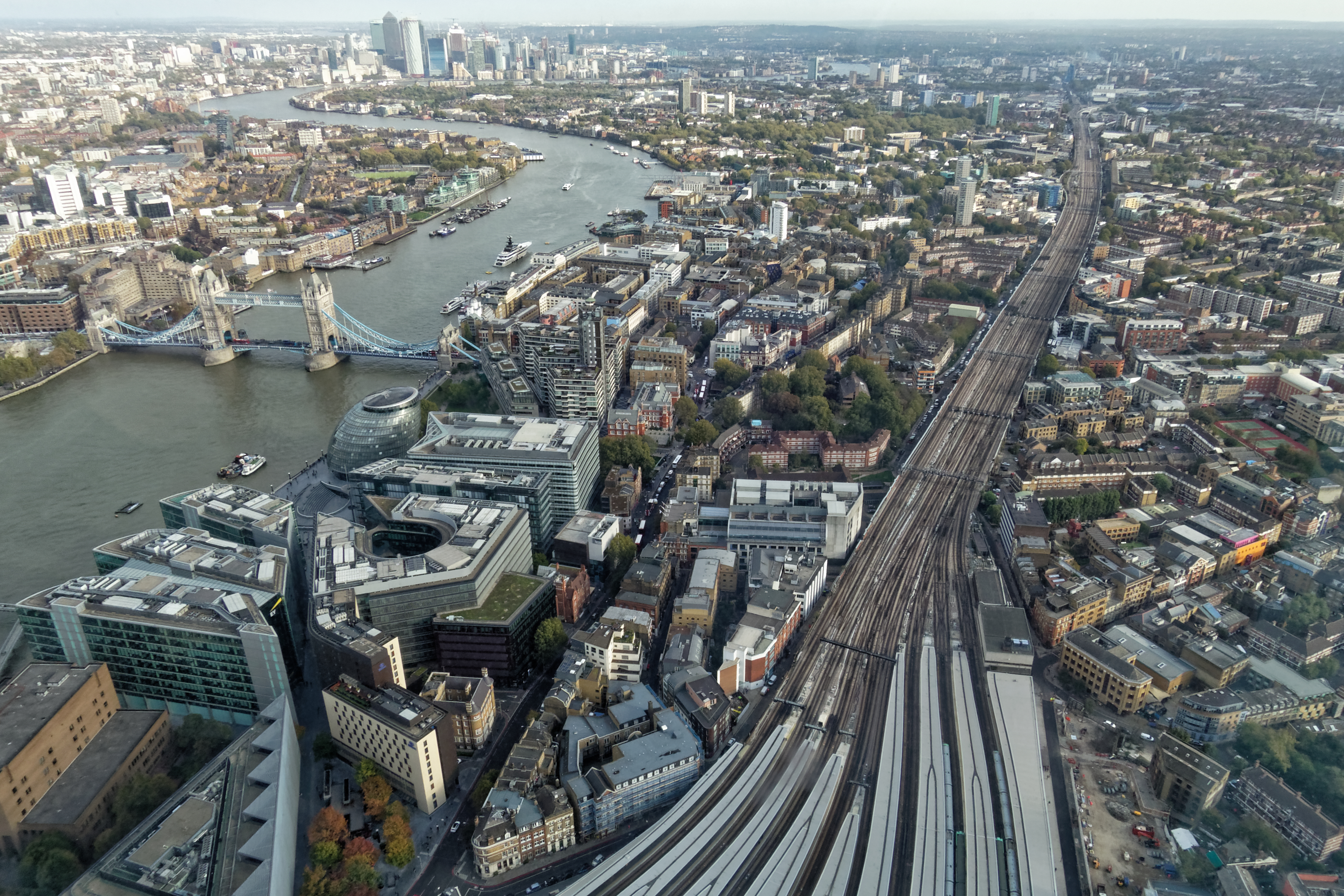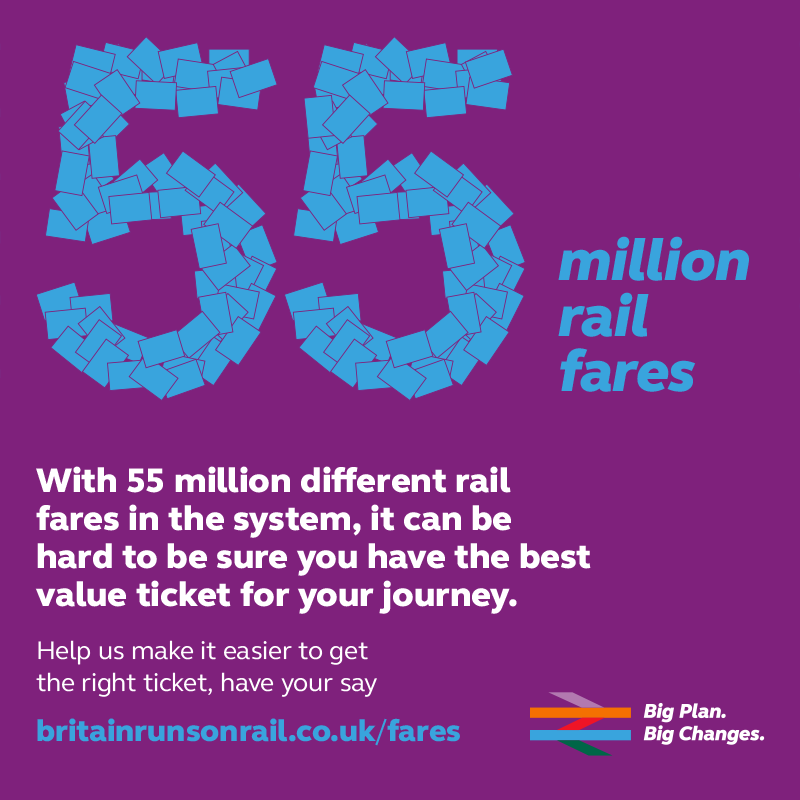Rail: the green way to connect the Union
By Andy Bagnall, Director General, Rail Delivery Group
 The government’s interim report on the Union Connectivity Review (UCR) published last week is timely.
The government’s interim report on the Union Connectivity Review (UCR) published last week is timely.
Post-pandemic, a fast and reliable transport network that enables passengers to travel and connect from all four corners of our country will be vital. RDG research shows, for example, that in 2019, there were 45 million Union-connecting journeys by rail. Our social and economic recovery depends on the four nations of this country pulling together and being reconnected in a way that strengthens communities and economies across our nations and regions.
The challenge now is to get this critical connectivity right for the UK’s future socio-economic ambitions, including our environmental targets. Better connectivity also needs to be green connectivity. How do we achieve this?
A network with passengers at its heart is the first step. A level playing field for the greenest forms of transport is the next – Office of Rail and Road statistics show rail accounts for just 1.4% of transport emissions despite carrying 10% of all journeys pre-pandemic.
So, let’s start with a connected network built around the needs of customers that gets passengers back on trains. To do this we need to both ‘build back better’ through improved infrastructure projects and ‘use smarter’ the existing infrastructure we have.
HS2 will provide the foundations for a new generation of connective transport between the cities of Great Britain, spanning England through its integration into the existing network and supporting onward services to Wales and Scotland. This will reduce journey times to Scotland from many parts of England and Wales, enabling faster journeys not just from London but from hubs in places like Birmingham and Crewe. As someone from London with a partner from Lanarkshire, I know faster, more reliable connections aren’t just important for business customers and economic recovery but for the family gatherings and the social contact we all want to get back to when we can travel again. Government funding for studies to look at improving links in the North West to North Wales, within Wales and on the West Coast Mainline is another step in towards improving infrastructure and enhancing Union connectivity. We welcome this.
New rail lines, stations and signalling enhancements are an essential part of a better-connected Union but how passengers use that rail network, which forms the spine of the UK, is just as crucial. This is where we need smarter use of what we have. The way we live and work has changed since the pandemic, with both staycations and flexible working becoming far more common. The rail industry needs to work intelligently to better spread demand across existing capacity and sustain the rise in service reliability we saw in the pandemic.
 Fares reform is an important part of the jigsaw here, giving customers a better connected, more convenient, fairer and greener way to travel in the Union. KPMG research from before the crisis shows that across the network, fares reform could incentivise over 300 million journeys on services with capacity for growth over a ten-year period, in addition to the 1.7 billion journeys which took place on the network pre-pandemic.
Fares reform is an important part of the jigsaw here, giving customers a better connected, more convenient, fairer and greener way to travel in the Union. KPMG research from before the crisis shows that across the network, fares reform could incentivise over 300 million journeys on services with capacity for growth over a ten-year period, in addition to the 1.7 billion journeys which took place on the network pre-pandemic.
We cannot afford to ignore either the evidence or the opportunity. A simplified fares system, based on single-leg pricing, would offer better value for money for customers and enable rail companies to provide better options for people whose needs are not met by the current, overly-complex system. It would also allow operators to incentivise passengers to use rail for cross-border journeys, which would in turn strengthen Union connectivity.
We need to meet the challenges of the recovery with a fares system that supports increased journeys between England, Wales and Scotland. One that personalises the passenger experience and helps the industry attract new customers, giving people the flexibility they are used to in other aspects of their lives when making journeys across the country for business or leisure purposes.
As we take those steps towards a network that connects our Union as effectively as possible, we also need to make sure greener travel options are costed and taxed in a way that is fair and that changes behaviours. The rail industry is grateful for the necessary government support it has received and as the recovery kicks in we all recognise that other sectors – including other transport modes – need a share of what support is available, so we understand the suggestion of reducing air passenger duty (APD) for domestic flights. But this cannot be a permanent state of affairs and it should not apply to routes where rail is a viable option if we want to encourage people to make the greener choice: evidence from Virgin East Coast to the Scottish government when it considered abolishing APD estimated a third of the southbound rail market from Edinburgh to London would switch to air. This is not the direction of travel we want to see.
Enhancing green connectivity requires reconsidering the taxes applied to different types of transport to make sure we have a green level playing field. The current system effectively penalises the rail industry for replacing diesel trains with cleaner electric trains, with levies on electricity now making up around 40% of the cost of powering trains, up from 12% a decade ago. A de facto 40% taxation on green-powered rail makes no sense when the kerosene used to fuel planes is tax exempt and car fuel duty has been frozen for a decade. If we want to keep on track with the scenarios set out in the Climate Change Committee’s sixth carbon budget for surface transport to reduce total car-kilometres demand by 7-16% by 2030 and 12-34% by 2050, we need to take sensible action now. Better connectivity, yes, but ensuring public policy levers are used to encourage, not discourage, green travel where it is an option.
Our job as an industry during the recovery is to connect the Union in a way that works for passengers, for the UK’s economy and for our net zero-carbon commitments. Let’s rise to the challenge.
